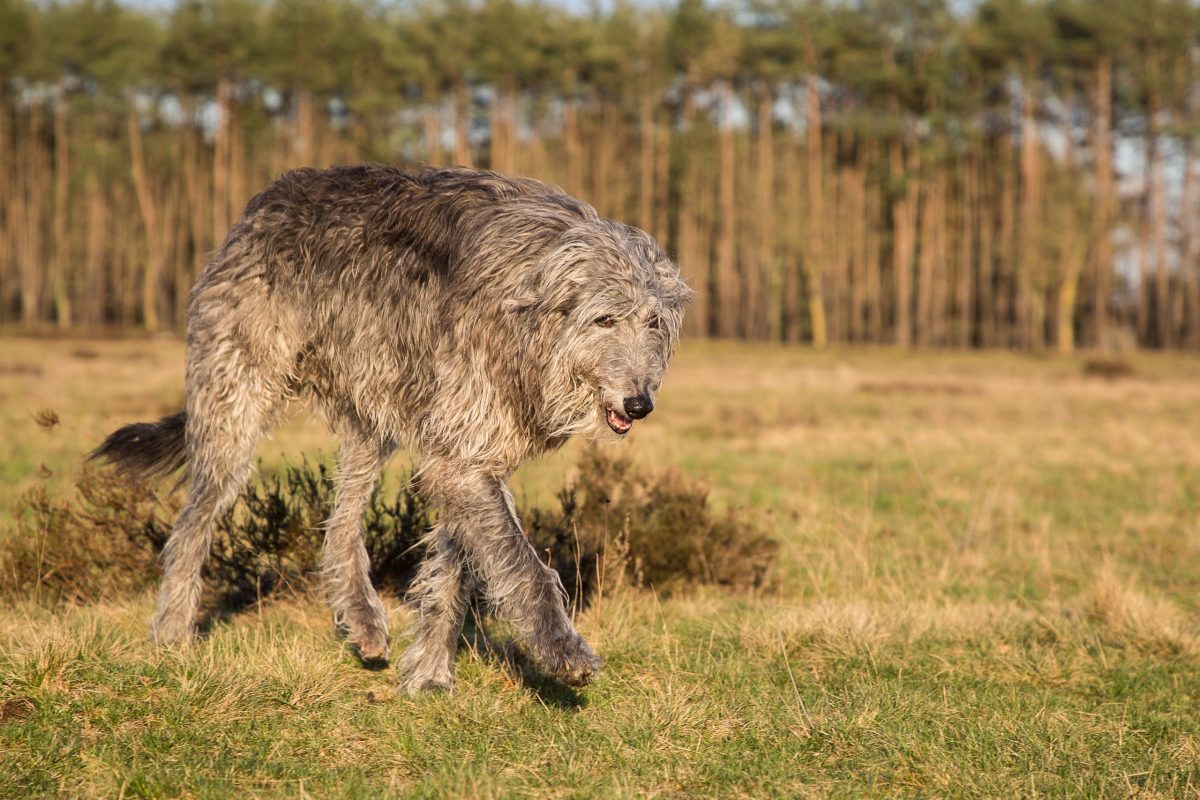 Shutterstock
Shutterstock
Dogs are often seen as loyal companions, but their understanding of the world goes far beyond just fetching or following commands. Many owners have noticed their dogs can pick up on subtle cues, anticipate actions, and even understand emotions in remarkable ways. This strong bond between humans and dogs points to a level of intelligence that goes unrecognized by many. As we explore some unbelievable signs, it becomes clear that your dog might understand far more than you ever thought possible.
Recognizing Your Emotions
 Shutterstock
Shutterstock
Dogs are exceptionally skilled at reading human emotions. They can sense when you’re happy, sad, or anxious, and they often alter their behavior in response. For example, a dog may comfort you by staying close when you’re upset or become more playful when you’re excited. This emotional sensitivity shows that dogs can interpret and respond to feelings in ways that make them more intuitive companions than many realize.
Understanding Routine
 Shutterstock
Shutterstock
Dogs thrive on routine, and many of them are able to predict what comes next based on established patterns. If you follow a predictable daily schedule, your dog will quickly pick up on your habits and begin anticipating your actions. For instance, they might know that when you put on your shoes, it’s time for a walk, or when you head for the kitchen, it’s feeding time. This ability to recognize and respond to routine highlights your dog’s keen awareness of their environment.
Responding to Specific Words
 Shutterstock
Shutterstock
While we tend to think of dogs as responding only to basic commands like “sit” or “stay,” many dogs understand a wide variety of words. Over time, dogs can learn to associate specific words with certain actions, events, or emotions. For example, a dog may react excitedly to the word “treat” or start wagging their tail at the mention of “walk.” This ability to grasp the meaning behind various words shows their cognitive abilities, suggesting they understand human language more than we might think.
Mimicking Human Behavior
 Shutterstock
Shutterstock
It’s common to see dogs mimic their owners’ behaviors, whether it’s sitting when you sit or stretching like you do. Some dogs even learn to replicate specific tasks, such as opening doors or retrieving items, which shows an impressive level of observation and imitation. This ability to mimic human actions suggests that dogs are not only aware of what we do, but they can also adapt their behavior to mirror ours. By learning from their owners, dogs further prove their cognitive depth.
Anticipating Your Needs
 Shutterstock
Shutterstock
Sometimes, dogs seem to know exactly what we need before we even realize it. If they notice a pattern, such as you getting ready to leave or preparing to go to bed, they may begin acting accordingly. Some dogs even try to help by bringing you items they think you’ll need, such as shoes, when you’re about to leave. This ability to anticipate needs beyond simple cues highlights the level of understanding dogs have when it comes to human behavior.
Communicating with Body Language
 Shutterstock
Shutterstock
Dogs are incredibly adept at reading human body language. They understand the way we move, how we hold ourselves, and the expressions we wear on our faces. For example, a dog might back off if you stand rigidly with a stern expression, or they might approach cautiously if you have your arms crossed. Their ability to interpret subtle cues like these indicates they are paying close attention to how we present ourselves, using this information to respond accordingly.
Understanding Cause and Effect
 Shutterstock
Shutterstock
Dogs are capable of grasping the concept of cause and effect, especially when it involves their actions. If they learn that certain behaviors result in a reward, like fetching a ball to get a treat, they will repeat these behaviors. Alternatively, if a dog’s actions result in negative consequences, like being scolded after chewing furniture, they will eventually understand to avoid them. This shows that dogs aren’t simply reacting to the present moment—they’re capable of making connections and adjusting their behavior based on outcomes.
Navigating Complex Environments
 Shutterstock
Shutterstock
Many dogs can navigate complex or unfamiliar environments with surprising skill. Whether it’s a crowded street, a busy park, or a new home, dogs can often figure out the best way to move through and adapt to their surroundings. Some dogs, for example, will instinctively take a specific path home or find their way through a maze of obstacles. This ability to analyze and make decisions based on environmental cues shows that dogs are problem solvers, processing information in ways that go beyond mere obedience.
Understanding Time
 Shutterstock
Shutterstock
While dogs don’t have the same concept of time as humans, they are still remarkably good at recognizing patterns and anticipating future events. For instance, many dogs will begin to show signs of excitement or anxiety when they know it’s time for a walk or meal. Some even appear to understand when you’re about to leave the house based on the time of day. This awareness of timing, even without clocks, suggests that dogs are more in tune with time than we often realize.
Understanding Social Cues
 Shutterstock
Shutterstock
Dogs are naturally social animals and are highly attuned to the behaviors of those around them. They understand when it’s time to be playful when to back off, and when to offer comfort. If you’re upset, your dog may approach with comforting behavior, and if you’re socializing, they might join in and become more energetic. This social awareness allows dogs to navigate human interactions with a high degree of understanding and empathy, proving that they can pick up on social cues much like humans.
Displaying Empathy
 Shutterstock
Shutterstock
One of the most astonishing signs that dogs understand more than we think is their ability to display empathy. If you’re feeling sad or unwell, your dog may respond by offering physical comfort, such as resting beside you or laying their head on your lap. This compassionate behavior is a clear indication that dogs don’t just sense emotions—they care about them and try to provide emotional support. Their empathetic actions show that dogs are deeply connected to their owners, not just as pets, but as companions who truly understand human emotions.
Reacting to Your Voice
 Shutterstock
Shutterstock
Dogs are highly sensitive to the tone and pitch of your voice. They can distinguish between happy, calm, or angry tones and often react differently depending on what they sense. For instance, if you speak to your dog in a cheerful tone, they may wag their tail or jump excitedly. On the other hand, if you use a stern tone, they may retreat or act submissively. This ability to understand the nuances of human speech and react appropriately shows that dogs are more attuned to our voices than we often give them credit for.
Offering Assistance in Unexpected Ways
 Shutterstock
Shutterstock
Some dogs have been known to offer help in surprising ways, showing their understanding of the world beyond what’s typically expected. For instance, a dog might help guide someone with mobility issues or fetch an item for an owner who is incapacitated. Dogs with service training are especially attuned to their owners’ needs, but even regular pets have been seen to respond to requests for help. This ability to provide assistance shows that dogs are not only aware of their surroundings but also keenly aware of how they can make life easier for those they care about.
The Canine Einstein Living Under Your Roof
 MidJourney
MidJourney
In conclusion, it’s clear that dogs possess intelligence that often exceeds our expectations. They understand our emotions, routines, and even social cues, showing they know us better than we realize. Dogs display their smarts in many ways, from anticipating needs to mirroring our actions. So, the next time your dog surprises you by seemingly reading your mind or acting in a way that catches you off guard, remember: you might just be living with a canine genius who’s a lot smarter than you think!

 1 month ago
24
1 month ago
24


















 English (US) ·
English (US) ·